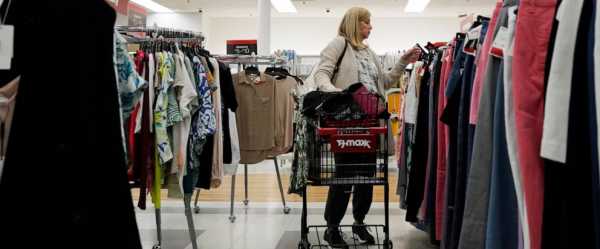
NEW YORK — Americans increased their spending at retailers last month despite pressure from still-high inflation and rising borrowing costs.
Thursday's report from the Commerce Department showed that retail sales rose 0.3% from April to May, boosted by stronger sales of auto and parts dealers.
Economists had been expecting a decline in sales for the month. Last month's increase pointed to a still-resilient economy, though retail sales have been bumpy this year after surging nearly 3% in January. Sales tumbled in February and March before recovering in April.
The latest retail sales data follow a government report this week that consumer inflation eased last month. Prices rose just 0.1% from April to May and are up just 4% over the previous 12 months — the lowest such figure in over two years. Americans are still facing surging prices for many items, including rent and used cars, though some of them are expected to slow or even decline in the coming months.
At the same time, closely watched "core” prices, which exclude volatile food and energy costs and are considered better able to capture underlying inflation trends, increased 5.3% in May compared with 12 months earlier. That's still far above the Fed’s target of 2%.
The retail figures released Thursday showed that lower gas prices may be freeing up shoppers' budgets to spend on other items. Sales at car and auto parts dealers rose 1.4%. Spending increased 0.3% at online retailers and 0.4% at restaurants and bars.
Some of the discretionary areas, which have been stagnant for several months, showed some modest gains like electronic stores, and furniture stores. Sales were unchanged, though, at clothing retailers.
A closely watched category of retail sales that excludes auto dealers and gas stations rose 0.4%.
“While they are still spending, consumers are becoming more financially cautious as lingering inflation and the Federal Reserve’s rate hikes take their toll, ” Lydia Boussar, senior economist at EY-Parthenon, said in a report. “We expect the slowdown in consumer spending to accelerate in the second half of the year as labor market gains falter, the buffer from excess savings shrinks and credit conditions tighten further.”
The government's monthly retail sales report offers only a partial look at consumer spending; it doesn’t include many services, including healthcare, travel and hotel lodging.
Americans have remained resilient in their spending even with signs of weakness elsewhere in the economy, but there are more clouds forming.
A solid job market has helped support spending, though the latest Labor Department report on unemployment claims, issued Thursday, showed that the number of Americans applying for these benefits remained elevated. That's a possible sign that the Fed's rate hikes over the past year might be slowing the job market.
Under the weight of higher prices, some shoppers have slowed their spending or traded down to cheaper goods and less expensive stores like Walmart. Higher interest rates have also made borrowing for a car or getting a mortgage for a house more expensive.
Earlier this month, retailers wrapped up their fiscal first quarter earnings season, which showed how still-high inflation in many areas is forcing shoppers to further cut back on discretionary items like clothing to afford their larger grocery bills.
Among the latest to report: Macy’s slashed its annual outlook after a spending pullback this spring, while Dollar General, which caters to low income shoppers, cut its annual sales and profit outlook as consumers turn more cautious.
Costco Wholesale Corp.’s chief financial officer, Richard Galanti, noted that customers are trading down from beef to poultry and pork in recent months. The company noted that even higher-income shoppers were switching to some canned food, like chicken and tuna.
Last month, Home Depot projected its first decline in annual revenue since 2009 in the aftermath of the bursting of the housing bubble and financial crisis.
Home Depot’s executive vice president of merchandising, William Bastek, told shareholders at its annual meeting this week that more consumers are buying appliances only when they break, not for upgrading.
“That’s become much more of a distress purchase,” he said.
________
AP Economics Writer Christopher Rugaber in Washington and AP Business Writer Matt Ott contributed to this report.
______
Follow Anne D’Innocenzio: http://twitter.com/ADInnocenzio
Sourse: abcnews.go.com






